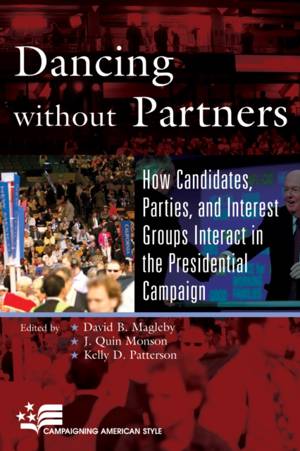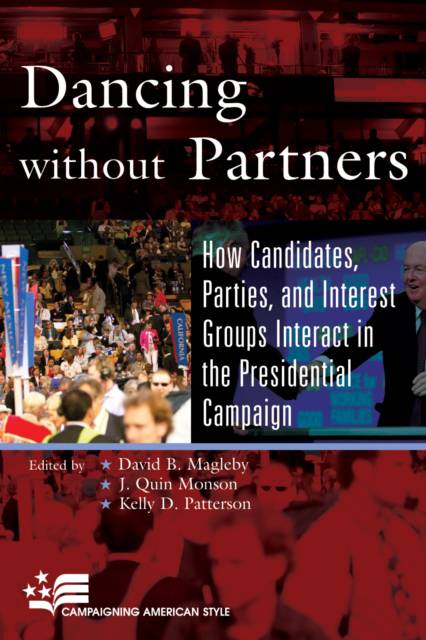
Je cadeautjes zeker op tijd in huis hebben voor de feestdagen? Kom langs in onze winkels en vind het perfecte geschenk!
- Afhalen na 1 uur in een winkel met voorraad
- Gratis thuislevering in België vanaf € 30
- Ruim aanbod met 7 miljoen producten
Je cadeautjes zeker op tijd in huis hebben voor de feestdagen? Kom langs in onze winkels en vind het perfecte geschenk!
- Afhalen na 1 uur in een winkel met voorraad
- Gratis thuislevering in België vanaf € 30
- Ruim aanbod met 7 miljoen producten
Zoeken
Dancing without Partners
How Candidates, Parties, and Interest Groups Interact in the Presidential Campaign
€ 74,95
+ 149 punten
Omschrijving
Political parties, interest groups, and candidate campaigns all pursue similar goals in presidential elections: each entity attempts to mobilize voters. However, the regulatory environment often prevents these groups from coordinating their efforts. With participants playing by new rules mandated by the Bipartisan Campaign Reform Act, the 2004 presidential election included previously unseen configurations and alliances between political actors. In some campaign situations, the resulting 'dance' was carefully choreographed. In others, dancers stepped on each other's toes. In still others, participants could only eye each other across the floor. Dancing without Partners intensively analyzes the relationships among candidates, political parties, and interest groups under the BCRA's new regulations in the 2004 election cycle in five battleground states. The chapters assess the ways in which the rules of the game have changed the game itself_and also how they haven't. The result is a book that will be invaluable to researchers and students of presidential elections.
Specificaties
Betrokkenen
- Uitgeverij:
Inhoud
- Aantal bladzijden:
- 202
- Taal:
- Engels
- Reeks:
Eigenschappen
- Productcode (EAN):
- 9780742553507
- Verschijningsdatum:
- 13/07/2006
- Uitvoering:
- Paperback
- Formaat:
- Trade paperback (VS)
- Afmetingen:
- 154 mm x 229 mm
- Gewicht:
- 322 g

Alleen bij Standaard Boekhandel
+ 149 punten op je klantenkaart van Standaard Boekhandel
Beoordelingen
We publiceren alleen reviews die voldoen aan de voorwaarden voor reviews. Bekijk onze voorwaarden voor reviews.








